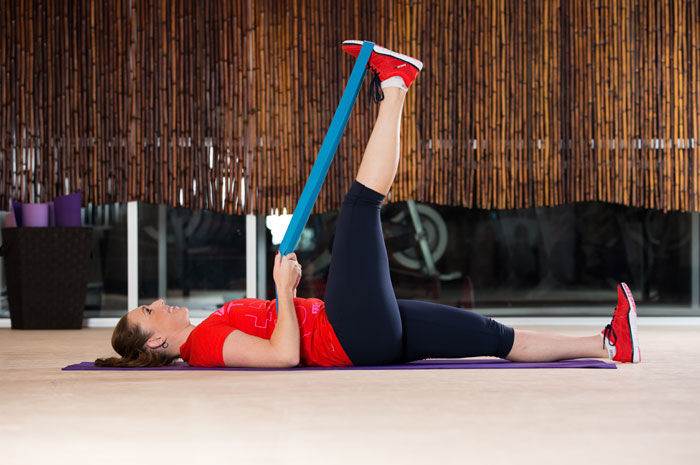Overuse injuries are one of the most common forms of injury among people are physically active. Repetitive movements, poor training techniques, faulty biomechanics or a combination of all three are usually to blame. Shin splints, a term used to describe pain in the lower leg, are a common overuse injury, especially among athletes and runners. The pain is classified as either medial tibial stress syndrome (MTSS) or anterior shin splints.
MTSS, also known as posterior shin splints, is often caused by a sudden change in activity that results in inflammation in the periosteum, the connective tissue covering the bone. This injury, which is commonly seen among runners and dancers, typically causes a dull ache in the lower back region of the leg.
Anterior shin splints, which are common in active individuals and runners alike, result in a dull ache in the front of the lower shin.
Individuals who experience chronic shin pain may need to consult a medical professional and alter training regimens. Whether shin splints are an acute or chronic issue, the following information is a guide to short- and long-term care and prevention.
Short-term Care
The purpose of short-term care is to manage the pain and incorporate healthy habits into your training routines to help prevent shin-splint pain in the future.
Monitor Pain and Symptoms: The most important aspect of caring for shin splints is to recognize when the pain persists and when it goes away. If necessary, consult a medical professional or personal trainer. Keep in mind that knowing the “what, when and how long” is essential for the professional to recommend appropriate self-care techniques.
Rest: Rest is an integral aspect of any fitness routine. When shin splints start to flare, one of the best recovery methods is to rest, which helps control the inflammation and prevents further damage. You may also want to ice the area, depending on your medical professional’s advice.
Reduce Training Volume: In the presence of shin splints, modifying your training program and reducing your distance runs will help reduce lower-body impact. When combined with rest and cross training, lowering your training volume reduces the likelihood that your lower-extremity muscles will continue to be agitated. If you run on concrete surfaces, you may benefit from switching to softer surfaces, as well as avoiding hill runs where heel striking is inevitable. Once the pain has diminished, gradually incorporate these terrains and harder surfaces back into your training runs. However, if issues persist even on softer surfaces, take this as a sign that you need more rest.
Vary Your Route: As previously mentioned, shin splints are typically an overuse issue and running the same route all the time can contribute to the problem. Your body adapts to the surface and all its faults. For example, if you are running in the same direction on a slanted road, one side of your body continuously experiences greater impact than the other side. To avoid this, take a different route or run in the opposite direction.
Stretching: When shin splints arise, lower-body stretches are beneficial. Runners who experience shin splints generally have tight Achilles and calves and/or weaker ankle muscles. Stretching the calf, soleus and shin region is essential for relief. The following two stretches are particularly beneficial for the anterior and posterior regions of the lower leg.
Posterior Leg Stretch

Lie on the ground and place a towel or yoga strap around the ball of the foot. Extend the leg toward the ceiling, keeping the foot flexed and maintaining a soft bend at the knee. Hold for 60 seconds before switching sides.
Tibialis Anterior Stretch

Step your right foot back and place your toes or the top of your shoe on the ground. Shift your body weight slightly forward until you feel a stretch in the front of the shin. Hold for 60 seconds and switch sides.
Long-term Care
Long-term care is best for shin-splint prevention, which includes training or recovery-method alterations.
Consult a Biomechanical Specialist: Understanding how feet function is essential to knowing whether shin splints or joint issues may result from walking and running activities. Consult a running expert, physical therapist or orthopedic doctor who can assess your feet, gait and posture. Structural deformities or bony prominences may result in more serious cases of lower-extremity issues. Lower-extremity muscular misalignments may be correctable through various strength and stretching routines.
Incorporate Self-myofascial Release Techniques: People who are highly active or are constantly training in an upright fashion benefit from self-myofascial release (SMR). You can use a soft foam roller as an initial form of SMR care, which can be performed daily, either before or after exercising. A foam roller is ideal for targeting the calf and soleus, tibialis anterior, hamstrings and quadriceps muscles. When foam rolling, it is best to start at the bottom, or base, of the muscle and slowly move up 2 inches, down 1 inch, until the roller has reached the top of the muscle. Slowly move back to the base of the muscle by moving down 2 inches, up 1 inch.
Change Your Gait: Gait combines supination and pronation of the foot. Most people who overpronate experience shin splints, or vice versa. In addition, individuals who heel strike while running, or who have a large running/walking stride, may be more susceptible to shin splints. Long strides and hard impact causes the shin muscles to stretch and work harder when decelerating. Every running program differs, but many people find success with a mid-foot strike to reduce ground reaction forces up the kinetic chain.
Get Supportive Shoes: Most runners and fitness enthusiasts can greatly benefit from buying “fitted” shoes versus the “coolest” pair off the shelf. Running shoe-store specialists are trained to observe a person’s gait and recommend a particular shoe based on those observations. These specialists understand the latest footwear technology that benefit overpronators and extreme supinators. Individuals with severe over pronation may benefit from orthotics. Some running experts suggest individuals who run large volumes weekly should purchase two pairs of shoes and alternate wearing each pair every few runs.
Cross Train: For those who suffer from chronic shin splints, cross training is ideal to reduce the load and impact on the lower extremities. Swimming or pool jogging, in particular, greatly reduce body-weight impact; other good cross-training options include cycling, elliptical training, resistance training, yoga and Pilates.




 by
by 




 by
by